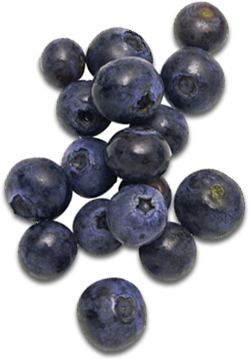no items to display
How to Maintain Healthy Eating When Dining Out
It’s no secret that home cooking is generally healthier than dining out. But dining out is part of the American lifestyle. In fact, we get about one-third of our calories away from home.[1] So it’s a great step forward for healthy eating that soon, everything from fast food to vending machine junk food will be legally required to clearly reveal its caloric load.
As of November 2015, chains with 20 or more locations will need to provide calorie counts on menus (think sit-down restaurant chains), menu boards (think fast food chains), and displays (think the bakery shelf at Starbucks or the candy counter at the movies). Other sellers of prepared foods — such as convenience stores and even supermarkets — will also have to show their hands. That will go a long way to helping us steer toward healthy food selections, but there’s a lot more to consider.
A calorie is not a calorie
Contrary to what you’ve been told for decades, not all calories are created equal. If you are tempted by two entrees that are nutritionally similar, but one has a lower calorie count, the lower-calorie one is probably your best bet. But different kinds of calories are metabolized differently. For example, it takes double the amount of energy to metabolize 300 calories of protein than it does to metabolize 300 calories of carbohydrate — one reason why low-carb diets are so effective.[2] Therefore, it’s not a good idea to make calorie counts the only way you distinguish between healthy and unhealthy foods.
Half a plate full of fruits and vegetables
The foods you should eat at restaurants are the same as the ones you should eat at home. That means choosing appetizers, salads, soups, and entrees that feature generous servings of fruits and vegetables. Here’s an easy-to-remember guideline that really helps me: Half your plate should be covered with fruits and veggies. That may mean choosing a big salad or a bowl of veggie-packed minestrone with a half-portion of pasta instead of a big plate of pasta with a tiny side of salad.
The Not So Fab Four: Foods to Avoid
Enjoy yourself when eating out, but try to avoid these four food villains.
1. Trans fats: Trans fats gum up your heart and your brain. They are, hands down, the worst type of fat you could eat. You may think you’re already doing a good job avoiding them. But beware the trans fat loophole! By law, foods can contain up to half a gram of trans fat per serving and still claim to be “trans fat free.” If you eat more than one serving or more than one kind of food with hidden trans fats, you may be eating more of this dangerous fat than you think.
Quick Tip: The easiest way to avoid trans fats is to steer clear of deep-fried foods, like doughnuts, potato chips, fried chicken, and fish & chips.
2. Vegetable oils: Even if they have no trans fat at all, most pan-fried foods are cooked in vegetable oil. Unfortunately, despite their healthy halo, most vegetable oils, such as corn and soy, have a high content of inflammatory omega-6 fatty acids. (Thankfully, olive oil does not!) Inflammation plays a role in many health conditions such as heart disease, diabetes, and cancer.[3],[4],[5]
Quick Tip: Choose grilled foods over fried. Hint: If the menu says “crispy,” it’s probably fried!
3. Sugar/High fructose corn syrup: Sugar isn’t just in those tempting desserts — it’s in a lot of restaurant foods! And high fructose corn syrup (HFCS) is particularly bad. That’s because fructose is metabolized differently than sucrose (table sugar), bypassing the GI tract and going straight to the liver, where it is used to manufacture triglycerides. HFCS has been linked to obesity, diabetes, and metabolic syndrome, and it’s ubiquitous in fast food.[6] You’ll find it in everything from salad dressings and sauces to sodas and shakes.
Quick Tip: Skip the liquid calories, which can add up fast, and drink seltzer water with lemon instead. That way you can save your calorie spend for your actual meal. Go easy on the dressings and sauces, and if you’re at a sit-down restaurant, ask for olive oil and vinegar to top your salad instead.
4. High-carb/glycemic index foods: Foods that are high in simple carbohydrates (or high on the glycemic index, a measure of a food’s impact on blood sugar levels) cause rapid spikes and drops in blood sugar, which can lead to a cycle of hunger, cravings, and over-eating. The obvious offenders are sodas and desserts. But other examples of high-glycemic foods include thing from the “white family” (i.e. white bread, baked goods, pasta, and rice), popcorn, and even potatoes and yams. Low-glycemic index foods include meat, dairy products, eggs, fats, beans, nuts, and non-starchy vegetables.
Quick Tip: One way to slow down the release of glucose into your bloodstream is to pair high-glycemic carbs with low-glycemic proteins and fats. So if you want to splurge and have pancakes, get a half-order and eat it with eggs. (And choose real maple syrup — the fake stuff is made with HFCS!)
Of course, there are going to be those times when you don’t eat as healthily as you should. And that’s exactly what Juice Plus+ is for — bridging the gap between your ideal diet and your actual diet!
How do you make healthy choices when eating out?
References
[1] Jalonick MC. New FDA rules will put calorie counts on menus. The Boston Globe. Dec. 1, 2014. http://www.bostonglobe.com/lifestyle/2014/12/01/new-fda-rules-will-put-calorie-counts-menus/NcV6aDQYG73CswHGc3KGrM/story.html
[2] Lustig R. Still believe ‘a calorie is a calorie’? Feb. 27, 2013. Huffington Post. http://www.huffingtonpost.com/robert-lustig-md/sugar-toxic_b_2759564.html
[3] Inflammation and heart disease. American Heart Association. July 29, 2014. http://www.heart.org/HEARTORG/Conditions/Inflammation-and-Heart-Disease_UCM_432150_Article.jsp
[4] Oaklander M. Why inflammation matters for diabetics. Time. 2014 Sep 11. http://time.com/3329225/inflammation-diabetes/
[5] Rakoff-Nahoum S. Why cancer and inflammation? Yale J Biol Med. 2006 Dec;79(3-4):123-30. http://www.ncbi.nlm.nih.gov/pmc/articles/PMC1994795/
[6] Lustig RH. Fructose: metabolic, hedonic, and societal parallels with ethanol. J Am Diet Assoc. 2010 Sep;119(9):1307-21. http://www.ncbi.nlm.nih.gov/pubmed/20800122






